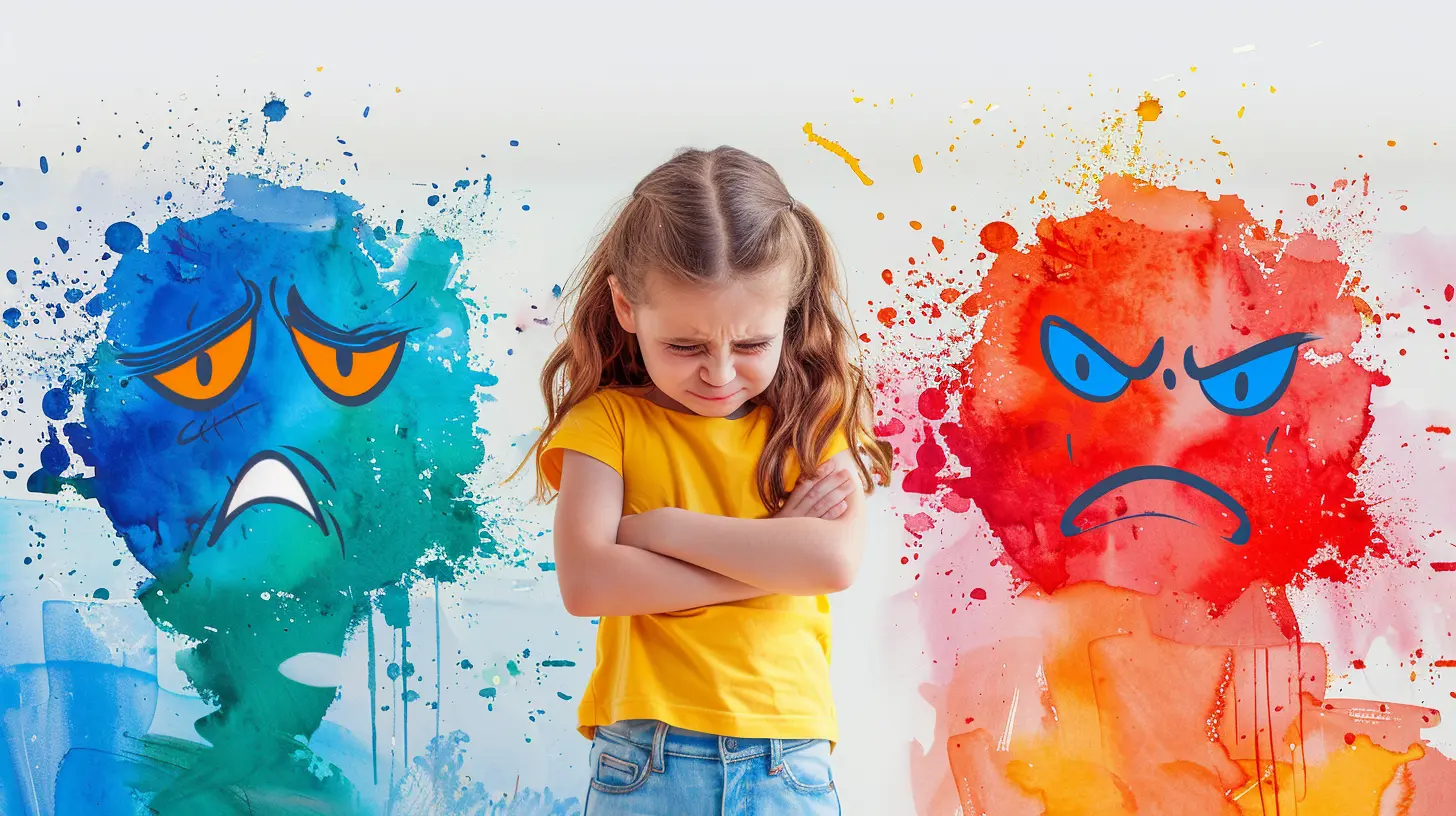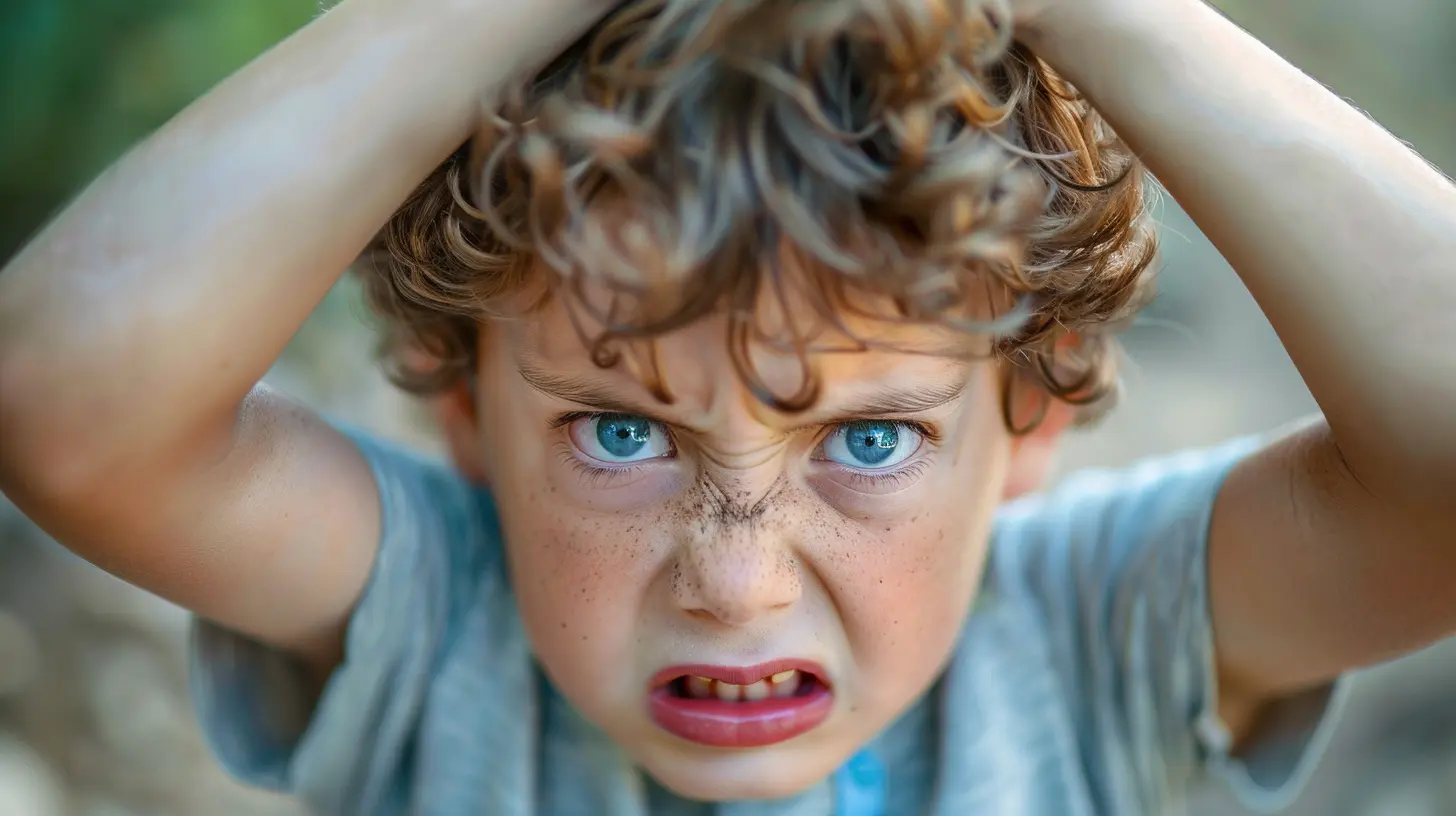Parenting and Emotional Regulation: Helping Your Child Manage Big Feelings
12 August 2025
Parenting is an emotional rollercoaster, isn't it? One moment, your child is giggling uncontrollably, and the next, they're melting down over a broken crayon. Emotions are big, messy, and sometimes overwhelming—not just for kids, but for parents too.
Helping children navigate their emotions is one of the most challenging yet rewarding aspects of parenting. Emotional regulation isn’t something kids are born knowing—it’s a skill they develop, with your guidance. So, how do you help your child manage those big feelings without losing your own sanity? Let’s dive into it. 
Understanding Emotional Regulation
What Is Emotional Regulation, Anyway?
Emotional regulation is the ability to manage emotions in a healthy, constructive way. It helps kids recognize what they’re feeling, why they’re feeling it, and how to handle their emotions in a way that doesn’t harm themselves or others.Think of it like learning to drive a car. At first, kids have no control—they’re just passengers, feeling every bump along the way. But as they grow, they learn how to steer, brake, and navigate the road of emotions with your help.
Why Is It So Hard for Kids to Regulate Emotions?
Children’s brains are still developing, particularly the prefrontal cortex—the part responsible for impulse control and problem-solving. So when your 4-year-old is wailing because their sandwich was cut the "wrong" way, they’re not being dramatic; they’re experiencing real distress.Remember, emotions aren’t logical. A child’s outburst isn’t manipulation—it’s a signal that they need help processing their feelings. 
Signs Your Child Is Struggling with Emotional Regulation
Kids express emotions in unique ways. Some cry, others yell, and some completely shut down. Here are a few signs your child may need extra support:- Frequent tantrums or meltdowns
- Difficulty calming down after getting upset
- Acting out aggressively (hitting, biting, throwing things)
- Avoiding or suppressing emotions instead of expressing them
- Anxiety or excessive worry over small issues
If any of these sound familiar, don’t worry—helping your child regulate emotions is possible with patience, practice, and the right tools. 
How to Help Your Child Manage Big Feelings
1. Acknowledge Their Emotions (Even the Big, Ugly Ones)
Imagine venting to a friend about a stressful day, and they respond with, "Oh, it’s not that bad. Just calm down." Frustrating, right? Kids feel the same way when we dismiss their feelings.Instead of saying, "Stop crying, it’s just a toy," try:
👉 "I see you’re upset because your toy broke. That must be really frustrating."
Acknowledging their feelings helps them feel heard and understood, making it easier for them to process emotions.
2. Help Them Name Their Emotions
For young children, emotions can feel like a foreign language. They might not know the words for what they’re feeling, which leads to frustration.Try teaching them a simple emotions vocabulary:
- Happy 😊
- Sad 😢
- Angry 😠
- Scared 😨
- Excited 🤩
Using books, emotion charts, or even simple storytelling can help children recognize and label what they’re feeling.
3. Model Emotional Regulation Yourself
Kids learn more from what we do than what we say. If you react to stress by yelling or slamming doors, they’ll pick up the same habits.Instead, when you’re feeling overwhelmed, try saying:
👉 "I’m feeling frustrated right now, so I’m going to take a deep breath before we talk."
This teaches them that emotions are normal and there are healthy ways to handle them.
4. Teach Calming Strategies
Just like adults, kids need tools to calm down when emotions get too big. Some easy techniques include:- Deep Breathing: "Smell the flower, blow out the candle" (inhale deeply through the nose, exhale slowly through the mouth).
- Counting to Ten: A simple distraction that helps regain control.
- Hugging a Stuffed Animal: Physical comfort can be grounding.
- Drawing or Coloring: A creative way to express feelings.
- Blowing Bubbles: Encourages slow, deep breathing.
Try practicing these strategies before your child is upset so they can use them when emotions hit.
5. Create a Safe Space for Big Feelings
All kids need a "calm-down corner"—a cozy, quiet space where they can go to self-regulate. This isn't a punishment area but a comforting retreat.Fill it with soft pillows, books about emotions, calming music, or sensory toys. Encouraging your child to use this space (rather than sending them there) gives them autonomy over their feelings.
6. Set Limits with Empathy
Boundaries are essential. It’s okay for kids to feel angry; it’s not okay for them to hit their sibling. A good approach is to validate their emotions while reinforcing limits:👉 "I know you’re mad, but we don’t hit people. Let’s find another way to let out that anger."
This approach balances empathy with discipline, teaching kids that emotions are okay, but certain behaviors aren’t.
7. Encourage Problem-Solving
Once a child is calm, help them find solutions to their frustrations. Ask open-ended questions like:- "What could we do differently next time?"
- "How can I help you when you feel this way?"
- "What would make you feel better right now?"
Teaching problem-solving skills empowers kids to handle challenges independently over time.
8. Be Patient—Emotional Regulation Takes Time
Just like learning to walk or read, regulating emotions doesn’t happen overnight. There will be setbacks, but consistency is key.Celebrate small wins:
✅ "Wow, you got upset but took deep breaths instead of screaming—that’s amazing!"
Positive reinforcement encourages growth and builds resilience. 
When to Seek Extra Help
Some emotional struggles go beyond typical childhood outbursts. If your child:- Has intense, uncontrollable meltdowns daily
- Struggles with anxiety or frequent mood swings
- Shows signs of depression or extreme withdrawal
- Becomes physically aggressive often
It may be time to seek professional support from a child therapist or counselor. There’s no shame in getting extra help—emotional well-being is just as important as physical health.
Final Thoughts: You’re Not Alone in This
Parenting is tough, especially when emotions are running high. But remember, your child isn’t giving you a hard time—they’re having a hard time. By guiding them with patience, understanding, and the right tools, you're helping them build lifelong emotional intelligence.So the next time your child is in the middle of a meltdown, take a deep breath. You're not just raising a child—you’re raising an emotionally resilient human being. And that? That’s the real magic of parenting.
all images in this post were generated using AI tools
Category:
Parenting StylesAuthor:

Austin Wilcox
Discussion
rate this article
1 comments
Jordan McPherson
This article offers valuable insights into helping children navigate their emotions. Understanding emotional regulation is crucial for their development. By providing tools and strategies, parents can empower their kids to express feelings in healthy ways, fostering resilience and emotional intelligence. A must-read for all parents!
September 5, 2025 at 2:22 AM

Austin Wilcox
Thank you for your thoughtful comment! I'm glad you found the insights valuable for fostering emotional regulation in children. Empowering parents to support their kids is at the heart of this article.


